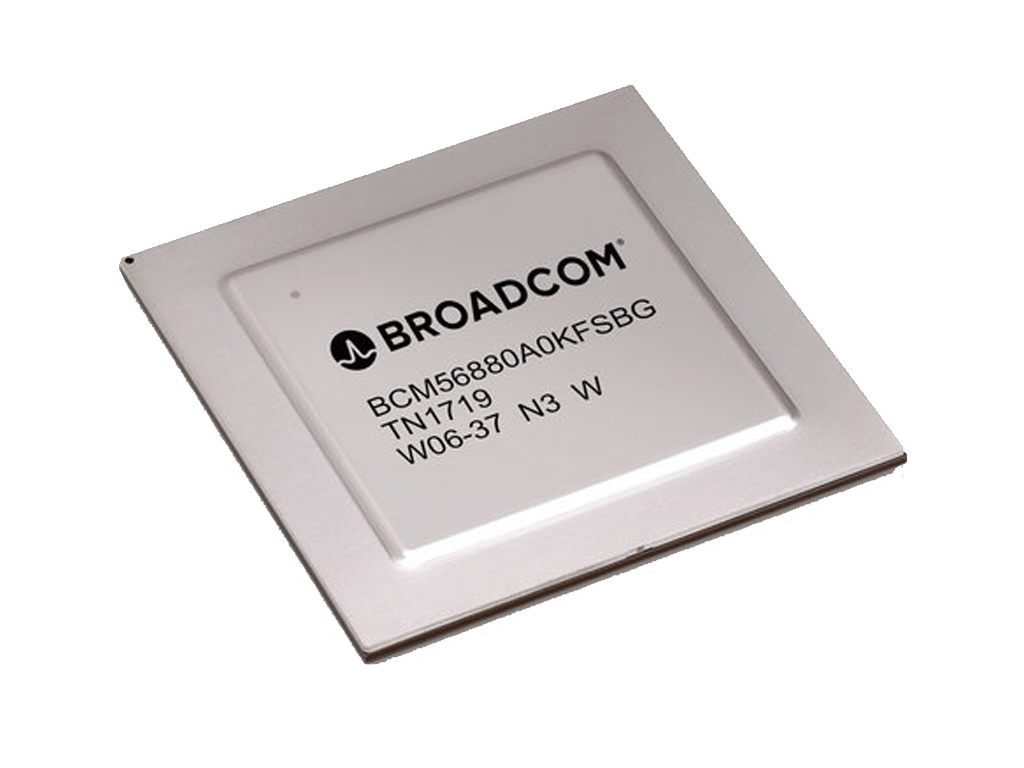May-June 2021 is the most intensive period of the significant manufacturers releasing the switch price increase and the largest increase in the period. Switch products have long been a big step from Internet communication applications into the IoT application scenario. The Internet of Things-related applications is more concentrated in the second half of the year. In the face of increased usage, prices have risen sharply, making it difficult to stock and costly. Is it possible that the switch price will go down in another month? Is not the chip on the next month to warm up? Various troubles and problems have brought fog to the entire switch field upstream and downstream. Seriously impede the adequate flow of goods, to the original in the chip shortage of the severe impact of the switch business circle and then a heavy punch. Based on my industry observation and personal experience exchanging upstream and downstream suppliers in Howevision Technology (a professional manufacturer of industrial switches in China), I will display and analyze the relevant issues.
The chips crisis is not only a problem in the field of switches.
From the end of 2020, the sound of chip shortages continues to come out, from security chips spread to automotive chips and then to CPU, GPU. Although the chip shortage is a normal phenomenon in the semiconductor industry, and there is a particular cycle, this seems to be a little beyond expectations, maybe the most severe shortage of chip crisis in several years. Many component manufacturers have increased prices. VW, Honda, and other car manufacturers due to the shortage of chips and shut down production. Early April, RINAJIE just announced that product prices increased by 5% -20%. On May 31, RINAJIE semiconductor official price adjustment letter, the cost of its products will again increase by 5% -20%, subject to the actual product model. May 31, Chip Union issued a price adjustment notice letter After half a year of tight supply and price increase. Due to the recent further increase in upstream wafer and packaging costs, the cost of our products continues to rise. We have to increase the price of all our products by 15% – 30% from May 31, 2021, and all undelivered orders will be executed according to the new price (including prepayment customers). STMicroelectronics issued a recent price increase notice, all product lines from June 1 starting price increases. The increase was second by the STMicroelectronics after a price increase on January 1. The global chip continues to be in short supply; early this year, chips and various downstream manufacturers frequently-issued price increases notice; up to now, because of upstream material shortage and other issues, many manufacturers are still in the news of price increases.

The reason for “chip shortage”?
On February 4, at Qualcomm’s (QCOM: NASDAQ ) 2021 quarterly earnings meeting, President Cristiano Amon said that the capacity shortage is comprehensive. The oversupply situation is expected to return to normal in the second half of the year. There is too much shortage of chips this year; it’s an extreme shortage.” In the semiconductor industry, to catch up with Moore’s Law for nearly half a century, cyclical capacity constraints are a long-standing occurrence in the industry. In the past, can rely on, for example, foundry layout in advance or counter-cyclical construction and other measures to reduce the conflict. Still, this time every part of the industry seems to have “miscalculated.” Foundry total production is transferred to the upstream equipment manufacturers. Then, the equipment manufacturers to its upstream parts manufacturers, some parts of the delivery time from the original 1-2 months to half a year. The supply shortage of upstream passed to the downstream, exacerbating the shortage of the consumer electronics industry. Affected by the new crown epidemic that began to plague globally at the beginning of last year, automakers adjusted their sales forecasts the previous year and asked their foundries to cut production. Foundries can’t just sit back and wait, and an excellent way to do that is to find other businesses. Foundries do have new opportunities, too. The epidemic catalyzed the demand for home offices, and the company was good for all information products related to it, such as cloud computing, cameras, PCs, intelligent communications, etc. These manufacturers became new customers for the foundries, taking over the extra capacity from the auto plants’ cut orders. But what people didn’t expect was that after the epidemic was controlled to some extent, especially in the second half of 2020, China’s auto sales rebounded. According to the Passenger Car Market Information Joint Committee, the annual car sales in the Chinese market will be about 2012.37 million units in 2020, making China the world’s top car market. This change has taken car companies and OEMs by surprise. On the global sales announced by Lexus for 2020, China became the only region with positive sales growth. In addition to these non-long-term factors, the rapid development of the technology industry is also an essential factor. China’s chip industry has invested heavily in the past two years, especially in China’s chip design companies. More and more products need chips, which is also an essential factor in causing the imbalance between supply and demand in the industry chain. After the tight production capacity, price increases seem logical. Sealing and testing plants, chip foundries, chip design companies, and other companies have announced price increases.
When will it relieve?
A few days ago, Intel CEO Pat Kissinger (Pat Gelsinger) said that the global shortage of chip supply might continue for two years. Intel directly broke the self-sufficient IDM model, announced to enter the chip foundry world, spending $ 20 billion on new chip factories; Samsung also plans to invest about $ 116 billion by 2030 to enhance semiconductor production capacity. Chip plants often take more than two years to build. Imagine, if it is a short-term relief “capacity shortage,” the giants will go to gamble on a future? Intel’s new CEO, Pat Kearsinger (Pat Gelsinger) that the epidemic will only accelerate the demand for more digital products, thereby promoting the continued growth of this demand. The technologies such as 5G, AI, and IoT continue to mature. There are more and more new players in the smart car market; high-performance cell phones, personal computers, game consoles, VR devices, etc… are all developing rapidly, which is the real reason for the surge in demand for chips. The global geopolitical game also brings many uncertainties to the alleviation of the chip shortage. Even if the supply is gradually restored, raw materials and terminals’ rising cost is almost inevitable. In such a complex background: supply and demand imbalance, the epidemic’s impact, trade wars, global geopolitical games, the complexity of chip processing and manufacturing, and other types of complex factors, the global chip shortage dilemma in two years must be able to ease? Chip supply even if the return to average, vast amounts of chip investment such as flowing consumption, the high investment in pre-chip are required for a more extended period to digest. The unit price of the chip can still return to the past?
PoE switch chip crisis status
The main switch in the market using the chip is probably divided into the following kinds, Broadcom, Marvell, VTS, Realtek, IC +. The first three chip solution providers belong to the United States chip company, and the last two chip solution providers belong to Taiwan chip company. In the face of the general background of chip shortage, these five major chip solution providers are using what kind of strategy to deal with the chip shortage problem?
Strategy one:
grasp the big and put the small! Switch product manufacturers are primarily concentrated in mainland China’s Pearl River Delta and Yangtze River Delta. In the face of chip shortages, chip manufacturers attach importance to the brand, the customer base of large manufacturers priority to ensure supply.
Strategy two:
Non-saturated supply! According to the production capacity to the contracted switch product manufacturers of the original chip demand of 20% to 30% of the collection amount, to ensure the essential supply.
Strategy three:
abandon low-end chips to protect high-end chips! For example, the Rene chip solutions provider has strategically submitted the packaging and supply of 100-gigabit switch chips to more secure the supply of gigabit and higher-end chips. Other chip solutions providers have also taken a similar strategy.
Strategy four:
Pay attention to the support and supply of innovative switch product manufacturers! Difficult times do not forget to cultivate new switch power. With innovative industrial switches as the main direction, Howevision Technology has the honor to be the uninterrupted supply unit of chip solution providers.

What user-related phenomena will occur in the field of switches?
- First, the shortage of switch chips is tight for at least two years. The supply of switch products belongs to the intermittent and insufficient supply state. The switch products will be maintained in the periodic unsaturated supply state for a long time.
- Secondly, two years later, even if the supply of switch chips is relieved, the unit price of switch chips is challenging to fall back. Until the initial investment costs are digested, it is expected to be challenging to outline the initial investment within five years. As a result, high unit prices of chips will continue for no less than five years.
- Again, the switch chip solution providers’ selective supply will lead to low-end switch manufacturers (shortage of brand, dosage no industry voice, shortage of innovation capabilities) in 2021-2022 will be converted or bankrupt.
- Finally, the switch price increase problem, some manufacturers in early 2021 is still firm to maintain the original price.
Based on our analysis, because there is a specific inventory of chips to support the brand propaganda, the first half of the chip increases in the bearable range. Able to choose not to raise prices, the general manufacturers will choose not to raise prices to obtain user recognition. In the second half of the increase, the actual chip inventory depleted, the second half of the peak season of engineering projects, the Internet of Things class, and the industrial class switch with a significant increase in volume. Rush to the eve of the peak price increase to protect the primary interests of manufacturers and maintain the essential operation of switch manufacturers. Then the price increase in coming down, and not as easy as the various manufacturers’ price increase notice out. Price increases are easy to reduce the price is difficult. Under the suppression of the chip shortage, the entire switch field, the vast majority of good at price war manufacturers have no reason to “overdraft” their reasonable profits. The “high price” switch will gradually become everyone’s habit. Waiting for the switch product price reduction may be “far away”!



